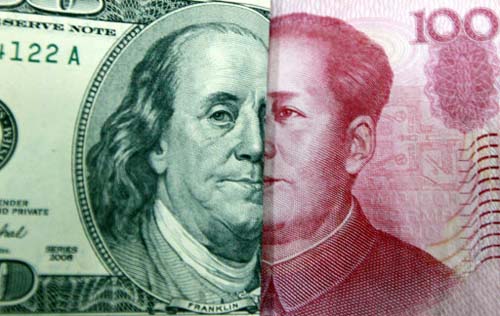At the turn of Fed’s monetary policy (2015), spillovers to EMEs triggered valuation effect on foreign exchange rate and equities, and capital outflows. The potency of these spillovers, after Helene Rey branded the dollar’s “global financial cycle”, disabled several EM central banks to manage rate policies to shield domestic financial stability. While these developments stand to support the failure of macroeconomics standard policies, EM central banks acted swiftly to adopt capital controls and large sell-out of FX reserves, largely denominated in US dollar that made milder the expected Fed induced turbulence.
EM actions caused consequences on sovereign bond market. For the large amount and almost synchronized unloading of FX reserves by the PBoC and other EME central banks, the impact could amount to a “quantitative tightening”. Jamie Caruana of the BIS writes that “reserve managers sales of government bonds in the SDR currencies could rival, or even surpass, the scale of ongoing purchases by the ECB and the Bank of Japan”, and even so “EMEs’ sales of bonds held in their reserves take place mostly in dollars and ongoing central bank purchases are in euros and yen, these effects compete in a global bond market”. As a result, spillbacks, he writes, “to advanced economies from EMEs ownership of specific advanced economy assets, such as sovereign bonds, have increased. The reduction in holdings of US bonds was arguably one factor contributing to moves in US yields over the past year[2015]” ( BIS 2016:57 ).
Uncertainty and systemically significant disturbances from advanced central banks’ monetary policies seem accelerating a turning point in EM central banks’ mindset. More independent and discretionary prudential policies, including a more active use of their FX reserves assets, are now prevailing among several EMEs countries.
A first step in this new trend is likely a de-dollarization via gold purchases, and later a redeployment of FX reserves in RMB.
Gold purchase, a long time vexata quaestio in economics, has recently gained credibility, other than legitimacy. Kenneth Rogoff has made a strong rationale for EMs central banks purchasing gold and exiting from overweight dollars’ FX reserves. EMs as a group, Rogoff writes, “Are competing for rich-country bonds, which is helping to drive down the interest rate they receive. With interest rates stuck near zero, rich-country bond prices cannot drop much more than they already have, while the supply of advanced-country debt is limited by tax capacity and risk tolerance”, so, he argues “a shift in emerging markets toward accumulating gold would [push up interest rate on rich-country bond and] help the international financial system function more smoothly and benefit everyone” (Rogoff 2016).
Actually, for securing FX reserves since they have massive dollar debts and want to reduce their dependence on the US dollar, EM central banks are going to gold purchases. China and Russia over the past two years accounted for nearly 85% of gold purchases by central banks in a move to diversify reserves, whilst demand from other central banks has declined. Russia’s gold reserves increased by 45.8 tons in the first quarter 2016, 52% higher than first quarter 2015. China bought 35.1 tons of gold from January to March of 2016. That was in addition to the 103.9 tons it purchased in the second half of 2016 (IMF 2016).
Russia is swiftly unwinding its U.S. Treasury bond position, from US$ 171 billion in October 2012 to US$ 70 billion in April, down 59 percent. Since January, euro assets held by Russia’s central bank have transcended its dollar assets, at 46.1 percent of total forex reserves, versus 39.6 percent. Russia has also been steadily buying gold; official gold reserves jumped from 403 tons in January 2007 to 1,247 tons in April, up 209 percent.
Countries along the New Silk Road are originating a new way to use their savings, and that is a game changer with relevant implications on developed economies, mainly on the U.S. Treasury bonds market.
The gold trend points to the continuation of FX reserves sales and redeployment out of the US dollar. This will most likely expand de-dollarization and weaken US dollar dominance. In 2014, at the height of China’s rush to its FX reserves buildup, Alan Greenspan anticipated that a redeployment of “ even a relatively modest part of China’s foreign exchange reserves into gold, the yuan[RMB] could take on unexpected strength in today’s international currency system. Buying gold bullion to displace the U.S. from its position as the world’s largest holder of monetary gold, China would likely incur a penalty for being wrong, in terms of lost interest and the cost of storage. Yet it would be a modest cost, if in the end this clears the way to a multiple and more balanced international monetary regime, less at the mercy of U.S. domestic objectives”.
An intervening variable in the picture comes from a likelihood of a de-globalization cycle, and trade deals put on ice. EMEs will face reduced exports to advanced economies, and as a consequence have fewer dollars left to be employed in purchasing US T-bonds.
Several structural changes in the global economy are driving a scale-back of past decade excessive FX reserves accumulation. This will end the “excessive” FX reserves habit that has been going on for more than 10 years.
For one, China, large buyer of FX reserves, mostly US T-bonds, is rebalancing its economy from export-led growth towards domestic demand and services. The reform of the RMB’ foreign exchange rate, launched in August last year, among other motives de-linking the RMB from the US Dollar, is set to speed pace. These developments will lead to fewer interventions, and a sharp reduction of FX reserves holdings, especially in US dollar.
In oil rich countries, the collapse of oil price, and increasing budget deficits are unlikely fostering any return to previous highs, and, the US policy energy independence reduces petrodollar recycling.
In Latin America, Chile, Colombia, Mexico, Peru, and Brazil for the Fed’s spillover effects exchange rates have weakened, and net private inflows have reduced. With ample international reserves at their disposal, several central banks have stepped up FX intervention with the aim of mitigating exchange rate volatility, so expediting the economy’s de-dollarization (Institute of International Finance 2015).
The implications of these cyclical trends point to transformative upshots in FX reserves policies. On global fixed income yields, there could be a rise of 100 pubs on the US T-bond and German Bund, a standard measure of the Eurozone, which will bring to a “quantitative tightening”, with additional headwinds towards developed market central banks’ exit from unconventional policy in coming years” (Winkler et Alii 2015).
A higher volatile RMB, due to Chinese policymakers fully liberalize the currency; will motivate China’s trade partners to hold RMB rather than US dollar to smooth out exchange rate volatility
In the end, the RMB’s liberalization reveals the accelerator of the shift in reserves portfolios policy, driving EM central banks, and more likely advanced central banks, to redeploy foreign exchange reserves’ portfolios into the Chinese currency.
Connecting the dots.
The spillover-spillback dynamics is not only a sign that core central banks’ one-way blow to the receiving side of the equation is spilling back to the first-mover(s). The law of the unintended consequences in full steam is producing, in the words of Christine Laggard “ unintended knock-on effects- with actions in one country spilling over to others, which in turn creates a negative feedback, or spillback effect, on the country that started the process” (Laggard 2016).
FX reserves’ paradigm shift would likely take some time to take hold given the proverbial prudence of foreign exchanges managers, and unlikely be soon any game-changing repercussions. Yet, spillbacks to core sovereign debt market are likely proving the potential to generate negative feedbacks that could eventually put a limit to excessive debt binge in advanced economies.
From a system analysis perspective, EMEs’ FX reserve-driven spillbacks seem rather the healthy response of endogenous and self-organizing forces which are leading to put it right the persistent monetary and financial dislocations generate by the Great Financial Crisis.
Whether these developments are part and parcel of “changing interdependence” (BIS 2016), eventually they will defy the current market inertia, halt the central banks’ compulsive money printing, and, conclude the dollar’s unipolar moment.

Economics
Advanced Central Banks’ Spillovers, and the Periphery’ Spillbacks. De-dollarization and the prospective role of the RMB.
Miriam L. Campanella1 Dicembre 20160
Share



















Lascia un commento